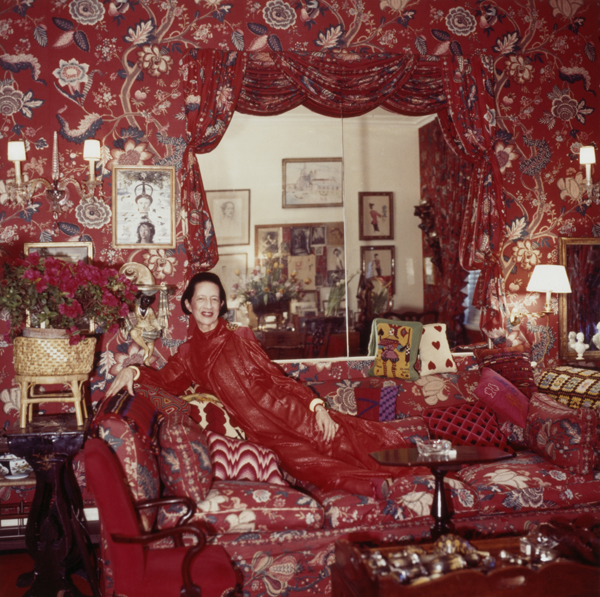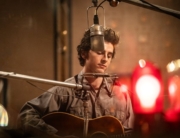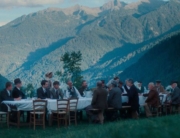
Diana Vreeland in her New York City apartment, 1979 (Estate of Horst P. Horst - Art + Commerce)
“Faction,” the blending of real life and fiction, is the word Diana Vreeland uses to describe the most interesting stories of her extraordinary life. Diana Vreeland: The Eye Has to Travel makes note that her sense of history, and even the stories she tells about her own life, are sometimes exaggerated to favor a more appealing narrative. This idea of “faction” drives this very entertaining documentary about Vreeland, who influenced 20th Century fashion as editor of Harper’s Bazaar and Vogue. Her authority on the world of fashion is undeniable, but her work and persona also reflect the popular culture of an entire century. Like “faction,” the images she put in her magazines reveal a mix of true cultural history and an added sense of fantasy.
Using pieces from a memoir she worked on with writer George Plimpton, D.V., Vreeland narrates her own story, starting from when she was a young child during the Belle Époque in Paris. She spent time in London and Colorado, where she knew Buffalo Bill. When she was ten, her family settled in New York City. She immersed herself in dance, reveling in the Roaring Twenties. She married young and moved to Europe, where she became good friends with Coco Chanel. After settling back in New York, she was noticed at a party by the editor of Harper’s Bazaar for having exquisite fashion sense and was brought in to work for the magazine as a columnist.
The rest is stuff of fashion legend. Vreeland discovered models that would define beauty in their respective decades, including Lauren Bacall, Twiggy, and Angelica Huston. She counseled Jacqueline Kennedy Onassis on her fashion choices. She helped the skyrocketing careers of such prominent photographers as Richard Avedon and David Bailey. Almost all of these cultural icons are interviewed, or their memories of Vreeland recounted.
Vreeland is wonderful to hear and watch. She is dynamic and charming, someone who knows everyone and has experienced everything, the kind of perfect documentary subject. Interviews with her friends, family and coworkers are dispersed throughout, all commenting on her drive and uniqueness. Particularly affective are clips from films which use Vreeland as the basis for several stern, eccentric magazine editors, including Funny Face.
Diana Vreeland plays with the notion that Vreeland was inventive with her personality. She became the person she wanted to be, and the lack of conversation concerning her family life is not ignored; Vreeland is clear with Plimpton that she’d much rather focus on her work than her homelife. Despite having what sounds like a romantic relationship with her husband, Thomas Reed Vreeland, he takes a backseat to the glamour. Her sons are interviewed, but they talk mostly of the woman and her work, not of their relationship with her. It holds with Vreeland’s insistence on discussing the people and pictures she made so legendary. “They were all great friends, I think,” she wryly notes about her famous friends. Her sense of fantasy rarely disappears; it borders on a kind of artifice, especially towards the end of the film. She is delightfully exuberant, but I did wish for a bit more on her private life, especially since the film is directed by her granddaughter-in-law, Lisa Immordino Vreeland.
That wouldn’t, however, play into the world of popular culture the film creates. Here, Vreeland is almost a mythical creature who influenced every decade until her death in 1989. She’s just as much the austere character shown in Funny Face as the real-life woman interviewed in her all-red New York City apartment. The film doesn’t go much beyond that, but perhaps her continuing influence is clear enough. Not having known much about Diana Vreeland before seeing this film, it seems now almost impossible that I could have had such a pop cultural blind spot.






Leave A Comment